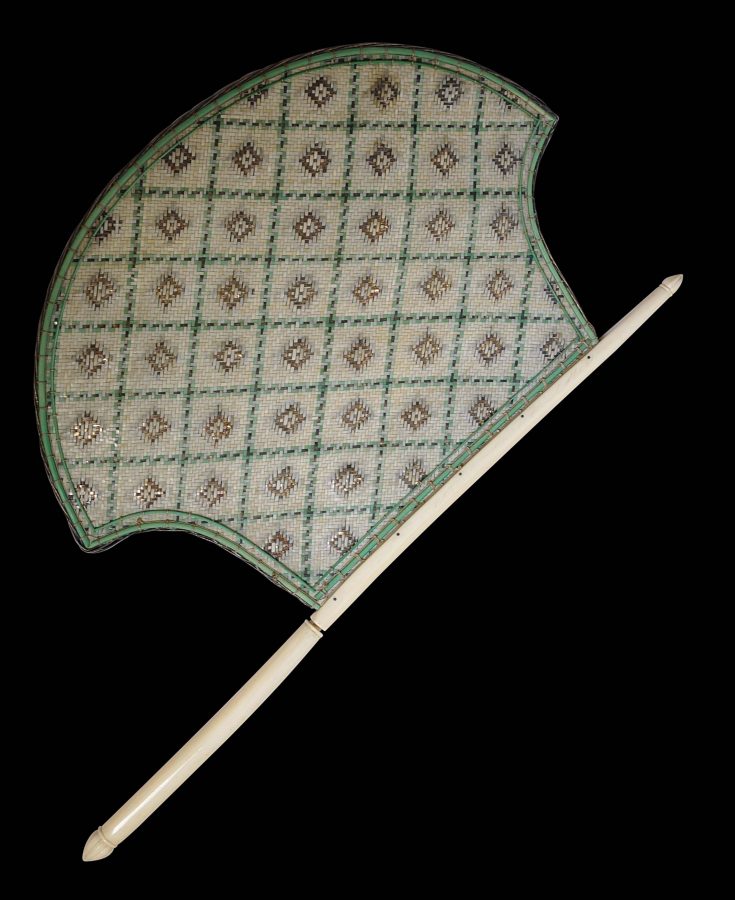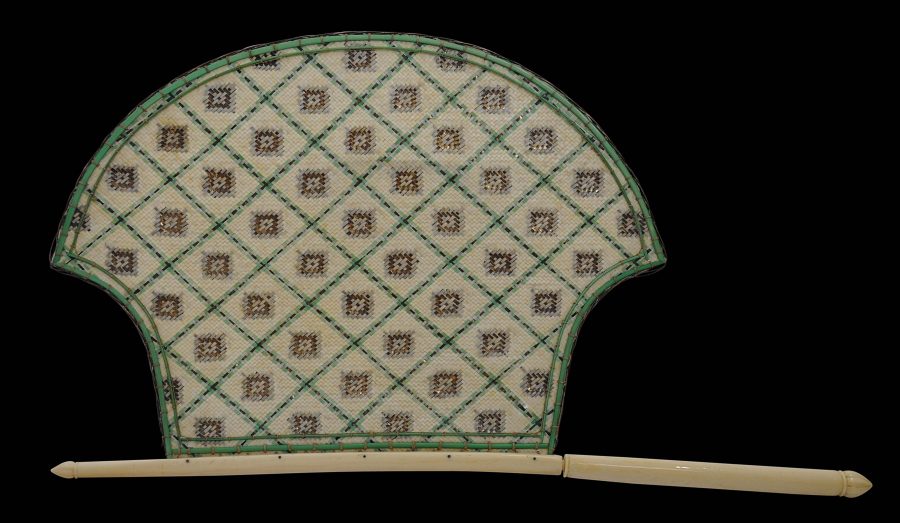This remarkable, museum-quality fan has a handle of solid, turned ivory, and a blade that is composed entirely of fine, split ivory strips woven and interspersed with flattened gold or gilded thread in emulation of woven rattan. Some of the ivory strips plus the fine ivory rods that make up the edging on both sides have been stained green.
The handle has a pivot mechanism to allow the head to turn backwards and forwards to provide the desired breeze.
Fans such as these were produced in Sylhet in Bengal, which had a long tradition of weaving of grass mats.
Such fans could have been used by members of the aristocracy but also might have been used to fan idols – images of the gods – during temple festivities. In this event, it is likely that the ivory used would have come from elephants that had died of natural causes.
We are aware of only two such fans that has been published, both are in the Victoria & Albert Museum. One, shown at and presumably acquired from the Paris Exhibition of 1867, is illustrated in Skelton & Francis (1979, p. 69). The other is shown in Hutt (1979, P. 61).
The fan here is in excellent condition. There are no losses or repairs. The ivory has a rich hue associated with age (the apparent different shades between the images below is due to different lighting when the photographs were taken.)



 Examples of furniture made with woven ivory instead of rattan in Chettinad mansions in the Chettinad district of Tamil Nadu, South India:
Examples of furniture made with woven ivory instead of rattan in Chettinad mansions in the Chettinad district of Tamil Nadu, South India:
(Photographed in December 2014).
References
Hutt, J.et al,Fans from the East, Debrett/V&A, 1978.
Skelton, R. & M. Francis (eds.),Arts of Bengal: The Heritage of Bangladesh and Eastern India, Trustees of the Whitechapel Gallery, 1979.




